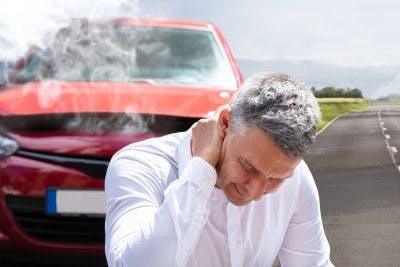Having awareness of the latest spinal cord injury statistics may help you develop a better understanding of recovery outcomes.
However, it’s also important to remember that every spinal cord injury and its recovery are unique. Many factors play a role in determining recovery outlook after SCI, so it’s important to take an individualized approach to rehabilitation.
To help you get a general idea of what to expect following a spinal cord injury, this article will discuss some of the most up-to-date spinal cord injury statistics from the National Spinal Cord Injury Statistical Center, including:
- What’s the prevalence of spinal cord injury in the US?
- What are the most common causes of spinal cord injuries?
- What’re the most common effects of SCI?
- What determines recovery outlook after spinal cord injury?
- What’s the most common level of spinal cord injury?
- What percentage of people with spinal cord injuries can work?
- What are the most common causes of mortality in patients with spinal cord injury?
- How long does recovery after SCI take?
The Latest Spinal Cord Injury Statistics
Every year, the National Spinal Cord Injury Statistical Center (NSCISC) releases a report with the most recent spinal cord injury statistics.Their 2023-2024 report and infographics included updated information regarding the prevalence, causes, types, and outcomes of spinal cord injuries that have occurred in the United States. All of the statistics included below come from that report, and there is a multitude of additional data available from their website.
Feel free to use the following links to the NSCISC website to learn more:
- NSCISC Annual Statistical Report (158 pages)
- NSCISC Home Page
- 2024 Facts and Figures At a Glance (NSCISC)
- 2024 Infographic
How common are spinal cord injuries?
According to the annual NSCISC report, it’s estimated that there are about 305,000 spinal cord injury survivors in the United States, with about 18,000 new injuries occurring each year. Males are more likely to experience a spinal cord injury, and account for 79% of all new injuries.
Interestingly, the average age of injury for SCI survivors has considerably increased in the past 40 years. Currently the average age of injury is 43 years old, while it was just 29 years old in the 1970s. .
What are the most common causes of spinal cord injuries?

Any blow to the spinal column can cause a traumatic spinal cord injury. According to the annual report, the most common causes of SCI since 2015 include:
- Auto accidents (37.5%)
- Falls (31.7%)
- Violence (primarily gunshot wounds) (15.4%)
- Sports accidents (8.0%)
- Medical/surgical injuries(3.7%)
- Other causes (3.8%)
The above SCI causes account only for traumatic spinal cord injuries.When a spinal cord injury is not caused by an outside force exerting pressure on the spinal cord, but rather is due to internal factors such as gradual wear and tear from increasing age, it is referred to as a nontraumatic spinal cord injury.
What are the most common effects of spinal cord injury?
The most common effects of a spinal cord injury are impaired motor control and sensation. The spinal cord is the passageway that connects sensory and motor nerve signals transmitted between the brain and muscles. Following a spinal cord injury, those signals may not be able to pass through the damage, resulting in loss of motor control and sensation.
Depending on the severity and location of the spinal cord injury, the outcomes of SCI can vary from mild to severe. Individuals with higher level spinal cord injuries, such as a cervical injury, may experience loss of sensation and/or motor control throughout much of their body, including the arms and legs. However, individuals with lower level injuries, such as a lumbar injury, may experience loss of sensation/motor control in their legs, but usually retain their upper body functions.
In addition, individuals may experience complications that arise as a result of impaired motor control and sensation, including:
Loss of bladder and bowel control
Sexual dysfunction
Body temperature dysregulation
What determines recovery outlook after spinal cord injury?
The severity of a spinal cord lesion significantly affects recovery outlook. Spinal cord injuries are often classified into complete or incomplete injuries.

An incomplete SCI refers to a spinal cord lesion that partially damages the spinal cord and does not affect all connections between the brain and areas below the level of injury. In contrast, a complete SCI refers to a lesion that cuts all the way across the spinal cord. As a result, no connections between the brain and areas below the level of injury exist.
Because damaged neurons in the spinal cord are not capable of regeneration, spinal cord injury recovery heavily depends on connections between the brain and areas below the level of injury unaffected by SCI to facilitate adaptive changes.
According to data gathered since 2015, about two thirds of all new spinal cord injuries are incomplete. These injuries can further be divided by how much of the body is affected, with tetraplegia affecting the arms, legs, and trunk and paraplegia affecting just the legs and possibly the trunk.
When categorized by the neurological level and severity of injury, the NSCISC annual report found the following:
- 47.4% of survivors had incomplete tetraplegia
- 20.0% of survivors had incomplete paraplegia
- 19.7% of survivors had complete paraplegia
- 12.3% of survivors had complete tetraplegia
- 0.5% of survivors had no neurological problems at time of hospital discharge
Fortunately, the majority of individuals with spinal cord injuries experience some form of functional recovery. While rehabilitation for incomplete spinal cord injuries primarily focuses on promoting adaptive changes in the spinal cord, rehabilitation for complete spinal cord injuries focuses on teaching individuals how to be as functional and independent as possible through compensatory techniques. However, researchers are continuing to study how to promote recovery of sensation and motor functions for those with complete spinal cord injuries.
What is the most common level of injury?

The location of a spinal cord injury helps determine which functions may be affected.
The spinal cord is a long collection of nerves that relays sensory and motor signals between the brain and body. It is split into 31 levels based on the number of nerve pairs branching out. At each level, nerves branch out and connect to different muscles and sensory tissues throughout the body.
Because signals cannot pass through spinal cord damage, motor signals from the brain cannot reach muscles innervated below the level of injury. As a result, those regions of the body experience weakness or paralysis. Likewise, sensory stimuli from areas of the body below the level of injury cannot reach the brain, resulting in loss of sensation.
According to the NSCISC report, cervical spinal cord injuries are the most common, followed by thoracic spinal cord injuries and lumbar SCIs. The most spinal cord injuries occur at the C4 and C5 level, respectively accounting for 15.7% and 14.8% of all new injuries.
What percentage of people with spinal cord injuries can work?
Some individuals are able to return to work after spinal cord injury. However, it’s important that you return to work only when you are able to manage the effects of your injury and feel ready to do so. Individuals should be educated about their workplace rights, including knowing how to advocate for and utilize appropriate accommodations. The following statistics show most common occupational statuses of SCI survivors 1 year after injury:
- 53% were unemployed
- 13.8% were students
- 12.9% were working
- 8.8% were retired
Statistics also show that as time increases, the percentage of unemployed decreases. By 5 years after initial injury, 21% of individuals were working, while unemployment dropped from 53% to 44.9%.
Most common causes of death after SCI?
Higher-level spinal cord injuries (C5 and up) can disrupt lung capacity and breathing. The C3-5 segments of the spinal cord innervate the diaphragm, which is essential for inhaling and exhaling. When diaphragm function is impaired, the lungs can’t expand as much, which makes it challenging to breathe and cough. As a result, respiratory complications, such as pneumonia, are the most common cause of death in spinal cord injury patients.
Based on the NSCISC data, the leading causes of mortality in individuals with SCI include:
- diseases of the respiratory system (21.4%)
- infective/parasitic diseases (12%)
- abnormal cell growths, called neoplasms (10.9%)
- hypertensive and ischemic heart disease (10.3%)
- other heart disease (8.3%)
Lack of motor control and sensation following SCI can increase one’s risk of developing chronic conditions. By making healthy lifestyle choices such as eating a healthy diet, finding ways to be more physically active, and quitting smoking, individuals can significantly improve their outcomes.
How long does recovery after SCI take?
It’s a commonly held belief that individuals with spinal cord injuries only have up to a year to recover and after that, they’re as good as they’re ever going to get. However, that’s not true, and many SCI patients continue to recover years following their injury.
Neuroplasticity is the central nervous system’s ability to make adaptive changes based on our behaviors. The reason why the most significant functional recovery is typically observed early after an SCI is because the central nervous system experiences a heightened state of plasticity the first 6 months or so following a spinal cord injury.
However, that does not mean that neuroplasticity goes away. As long as you have an incomplete spinal cord injury and continue to consistently practice affected movements, you’ll stimulate the spinal cord and reinforce demand for those functions. While movements may feel uncomfortable or weak at the beginning, repetitive practice will help rewire and strengthen the neural connections for those functions, and gradually, they will feel more comfortable.
Spinal Cord Injury Statistics: Key Takeaways
Every spinal cord injury and its recovery are unique, so it’s essential to take the statistics in this article with a grain of salt. What is definite, however, is that the spinal cord is capable of making adaptive changes and improvements are possible.
We hope this article helped you understand that SCIs can affect anyone at any age, and that many people are able to recover after injury and have a high quality of life.











